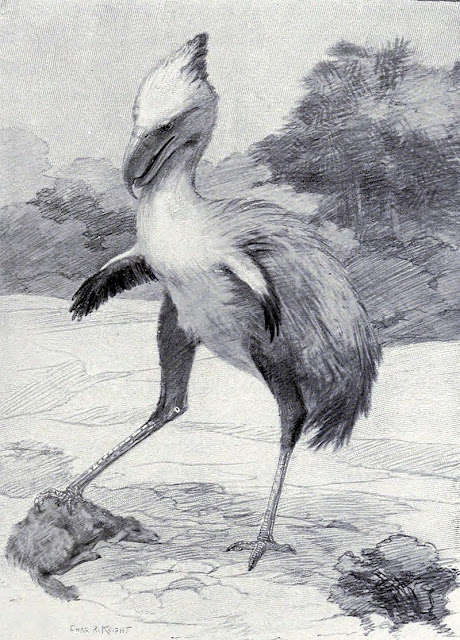The holotype is a mandible in the Museo de La Plata in Argentina and it is labeled MLP-118. The name that the scientific community knows this mandible by is Phorusrhacos longissimus (Ameghino 1887). In more colloquial terms we refer to it as a "Terror Bird". Today remains of this bird are known from the Santa Cruz and Monte Leon Formations from the Miocene epoch (23 MYA to 5.3 MYA). Originally described as a toothless mammal, Florentino Ameghino appears to have named the animal for a wrinkled appearance of bone on the mandible; the name means "Wrinkle bearer" (for more on other possible translations see Lydekker, below). In 1889 Ameghino offered a change to the name, for grammatical reasons, to Phororhacos, but the original maintains seniority and is in use because of this, though the 1889 spelling is recognized by some as an alternative spelling. In 1891 Ameghino again published on remains of the bird, then recognizing it as a bird rather than a mammal and adjusting the initial description.
Standing at approximately 2.4 m (7.9 ft) and with a skull 65 cm (26 in) long, Phorusrhacos was a giant in the Miocene of South America and was very capable of hunting and preying upon most other forms of life. Weighing around what a male ostrich weighs (130 kg, 290 lb), sporting a raptorial hooked beak, and strong legs that appear to have been capable of providing a long stride and a high speed, Pharusrhacos was an apex predator capable of running down, pinning, and dispatching prey with a swift stroke of its head and beak. Flightless and fierce, this was indeed a terror bird.
Sources to Consider
Ameghino, F. (1889). Contribución al conocimiento de los mamíferos fósiles
de la República Argentina. Actas de la Academia Nacional de Ciencias de la República Argentina en Córdoba 6:xxxii-1027
Ameghino, F. (1891). "Mamíferos y aves fósiles argentinas. Especies nuevas, adiciones y correcciones". Revista Argentina de Historia Natural. 1: 240–259.
Fernicola, J. C., Cuitiño, J. I., Vizcaíno, S. F., Bargo, M. S., & Kay, R. F. (2014). Fossil localities of the Santa Cruz Formation (Early Miocene, Patagonia, Argentina) prospected by Carlos Ameghino in 1887 revisited and the location of the Notohippidian. Journal of South American Earth Sciences, 52, 94-107.
Lydekker, R. (1893). "On the extinct giant birds of Argentina". Ibis series 6 (5): 40–47.


No comments:
Post a Comment